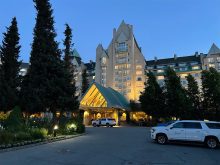Presentations to a recent gathering of world farmers in Zambia made it clear that the country has a lot going for it.
Yet at the same time, Zambia imports 20 percent of its food.
The meeting, which looked for ways to unlock Africa’s potential, heard from Zambian government-related research agencies, the country’s agriculture ministry and Zanaco, Rabobank’s partner bank and the premier food and agri-business bank in Zambia.
They said the country’s food and agricultural sector offers the full width and breadth of farming in Africa, from smallholder and emerging farmers to commercial farming to corporate farming to large food processing companies.
Read Also

Downturn in grain farm economics threatens to be long term
We might look back at this fall as the turning point in grain farm economics — the point where making money became really difficult.
The agricultural sector produces many of the global commodities, including corn, soybeans, wheat, sugar and potatoes. The sector is dynamic and developing fast.
However, although 45 percent of Zambia’s land is arable, only 15 percent of that amount is cultivated.
The country’s urbanization rate exceeds 40 percent, driven by a high rural poverty rate that, despite positive general economic developments, has remained virtually unchanged. It’s quite a paradox, which can’t be explained in a couple of sentences. It is a complex issue and its reasons are myriad, including:
- The economy’s single dependency on copper. Seventy-five percent of the country’s national income is derived from trade in this commodity.
- Macro-economic developments such as a decreased need for copper and its direct negative impact on gross domestic product as well as negative exchange rate developments between the U.S. dollar and the Zambian kwacha.
- Political instability that in-creased over the past decades. Government agricultural policies and programs do not get the chance to come to full fruition.
In addition, many Zambian farmers are smallholder and emergent farmers who are considered “unbankable” but represent most potential for improvement.
Providing those farmers with access to knowledge, networks, finance and markets is vital for unlocking that potential, instead of increasing scale and mechanization levels, which might result in job losses.
Access to finance is increased by out-grower schemes, co-operative financing and innovative products such as “loan a cow.”
Companies such as Zambeef, a small butcher that turned into a big brand and has fully integrated its agri-business, provide smallholder farmers with access to markets.
Seventy to 80 percent of Zambeef’s input for beef-based products is sourced from smallholder and emerging farmers.
Additional solutions include partnerships and co-operations increasing farmers’ “bankability,” diversification, smart agriculture and especially highlighting the important role of women in agriculture.
These solutions are also warming up the next generation for the sector.
However, participants in the recent meeting in Zambia concluded that for this next generation to take over the helm, they need to :
- like what they do
- be passionate about it
- have a tolerance for frustration
- grasp new opportunities that come with each disaster
- inspire their people
- be innovative and resilient
Bruno Melcher, a Brazilian farmer and a participant in the Master Class conference in Zambia, said he had come to realize that “we can’t come in and change things based on our own perspectives. Transformation needs to take place without conflicting with Africa’s way.”
Rabobank is a multinational bank based in the Netherlands.

















